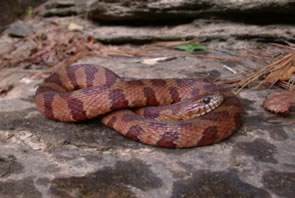
Nerodia sipedon
Photo by JD Willson
Description: Northern watersnakes are rather large, heavy-bodied watersnakes. Individuals vary in coloration and may be gray, reddish, brown, or black. The front section of the body is usually crossbanded, but on the middle and posterior portions of the body, the crossbands break up into three alternating rows of blotches. Northern watersnakes usually darken with age so some older snakes may be uniformly dark. Those found in the salt marshes of the Outer Banks and nearby mainland are a distinct subspecies called the “Carolina watersnake” and are considerably darker than those from inland localities.
Feeding/Diet: The diet of northern watersnakes is varied, but consists primarily of fish and amphibians. They are active both during the day and at night.
Habitat/Range: They inhabit a variety of aquatic environments throughout the northern Coastal Plain, Piedmont, and mountains of North Carolina.
Reproduction: This snake gives birth to 9–45 boldly marked young in late summer and fall.
Miscellaneous: The northern watersnake is often mistaken for the cottonmouth because of its dark coloration and habitat preferences. Distinctly- banded individuals are sometimes mistakenly identified as copperheads or cottonmouths. When threatened, they will often flatten their bodies and spread their jaws to make themselves appear larger. If harassed or picked up, the northern watersnake will not hesitate to bite and smear the antagonist with musk from glands at the base of the tail.
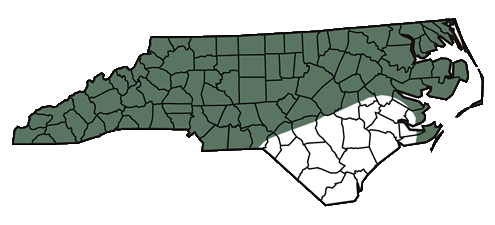
The shaded region represents the range of the northern watersnake in North Carolina.
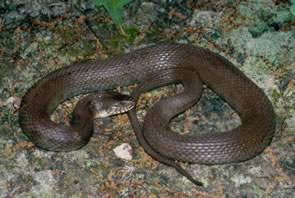
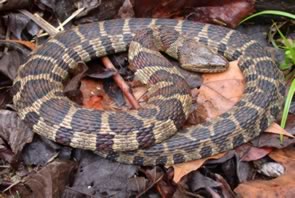
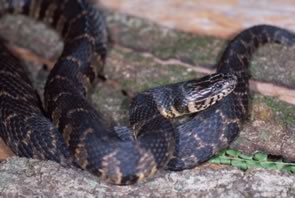
A very dark individual lacking a clearly defined pattern.
Photo by RW Van Devender
Note the defensive posture with body and head flattened.
Photo
by JD Willson
An example of the "Carolina watersnake" subspecies.
Photo by Eric Stine
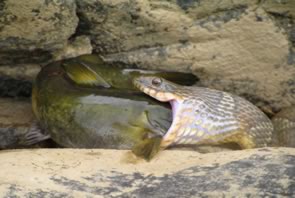
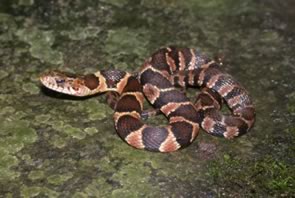
Photo by Christoph Baumgartner
Photo by JD Willson
This website created by: J. Willson, Y. Kornilev, W. Anderson, G. Connette and E. Eskew.
For comments or questions contact M. Dorcas: midorcas@davidson.edu.
M. Dorcas homepage: http://bio.davidson.edu/dorcas
Davidson College, Davidson, North Carolina 28035-1719.
Text and maps from: Dorcas, M. E. 2004. A Guide to the Snakes of North Carolina. Davidson College - Herpetology Laboratory, Davidson, NC. – Copyright by Michael E. Dorcas.
Partial Funding for this website provided by a Associate Colleges of the South, National Science Foundation, and Duke Energy.
